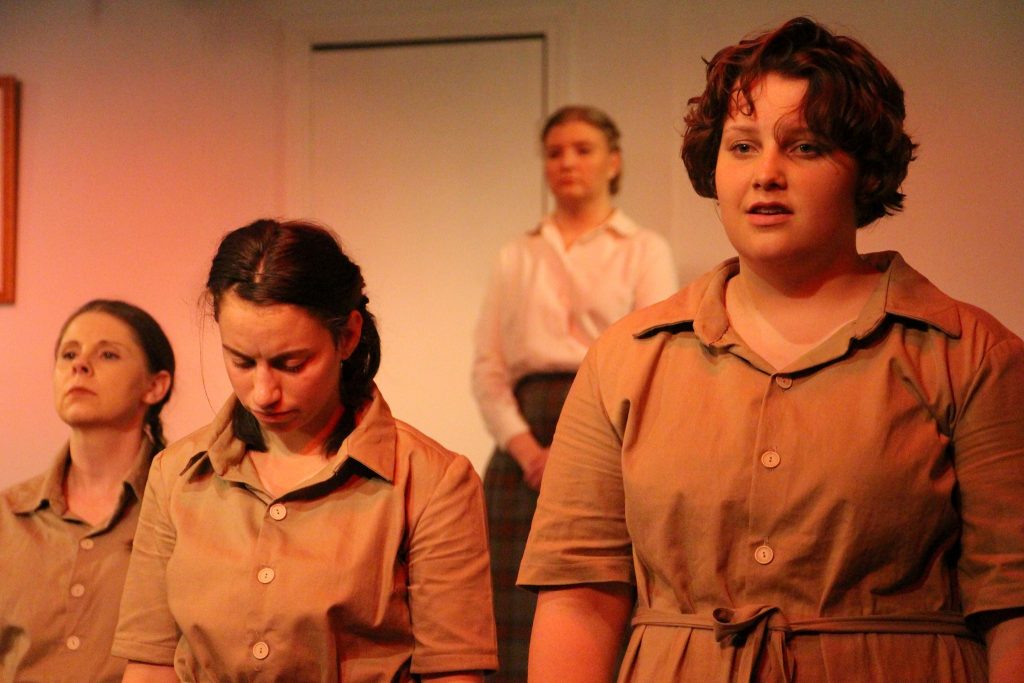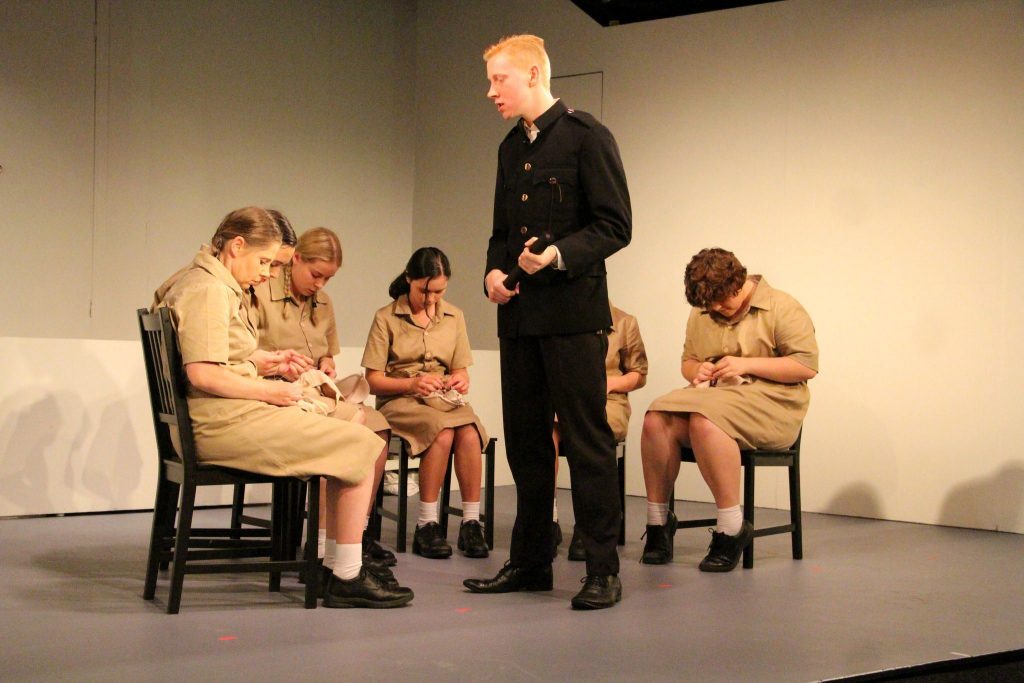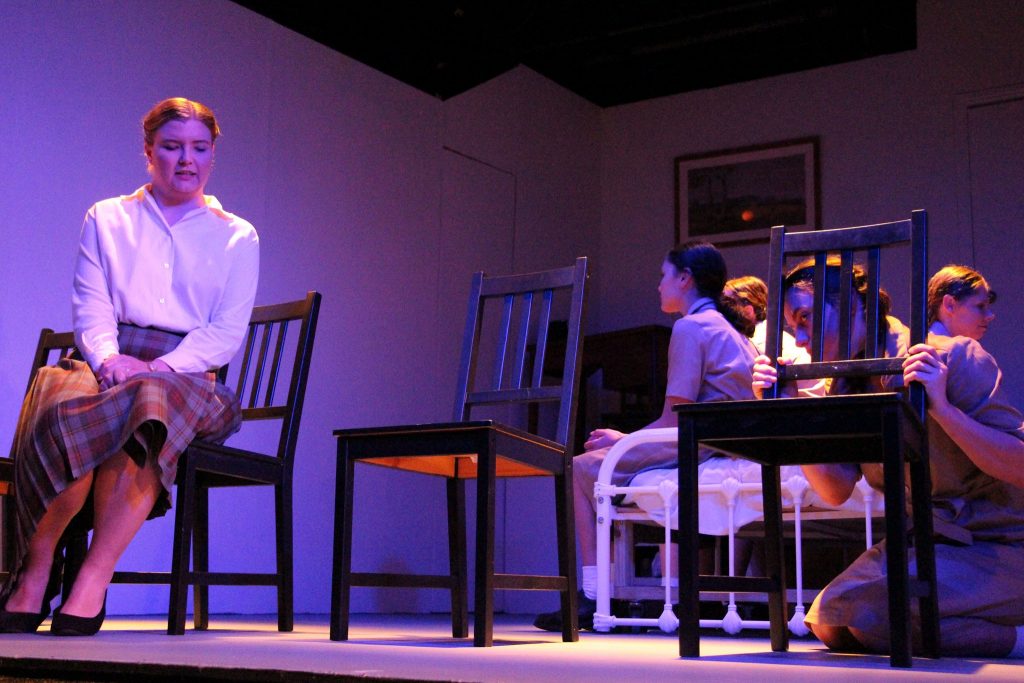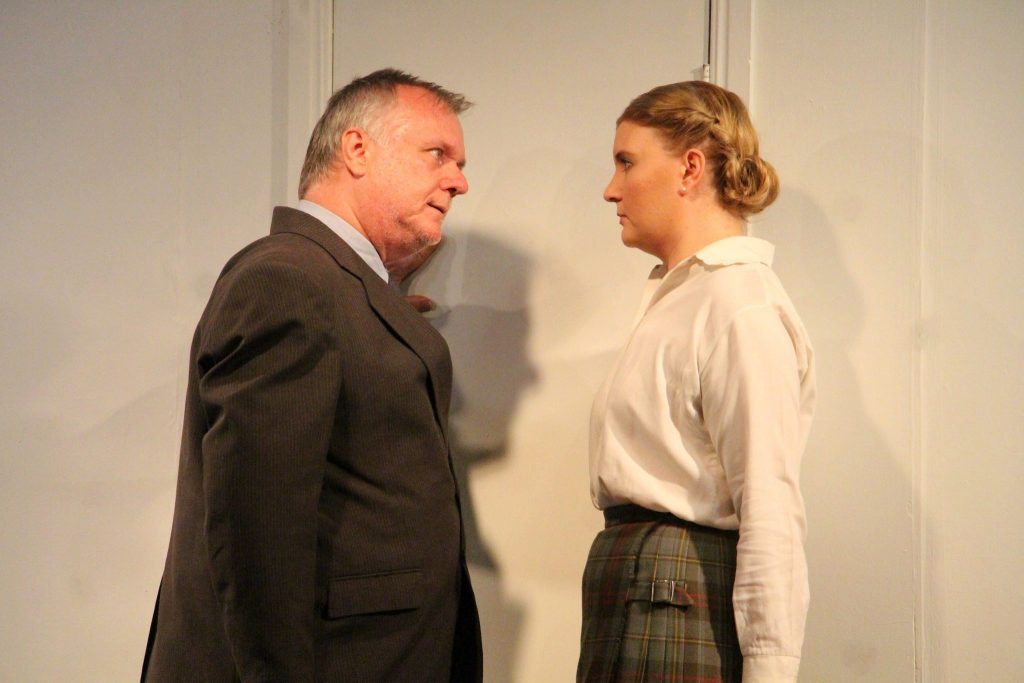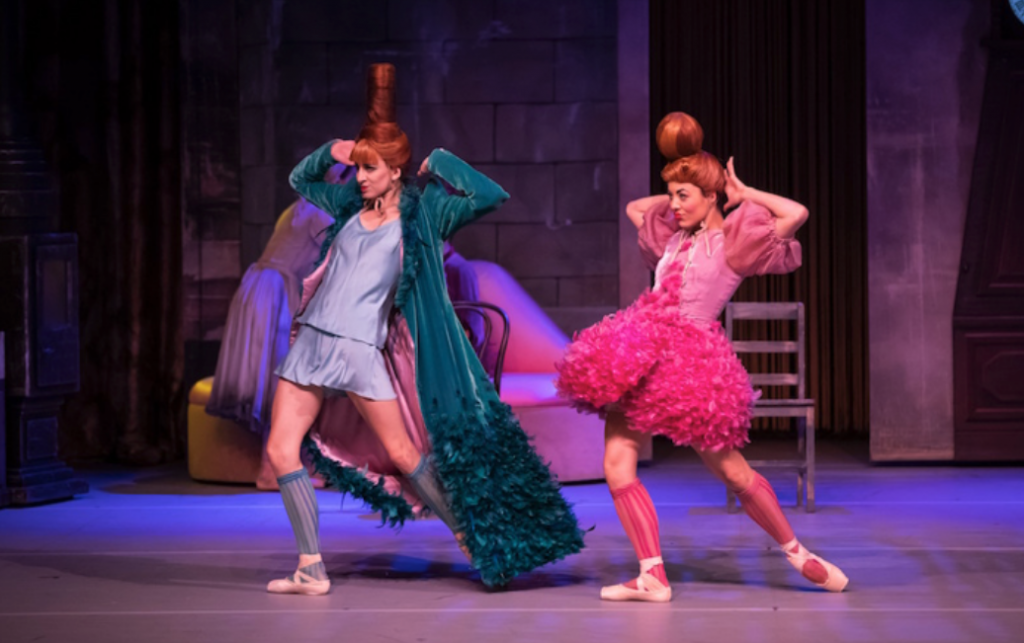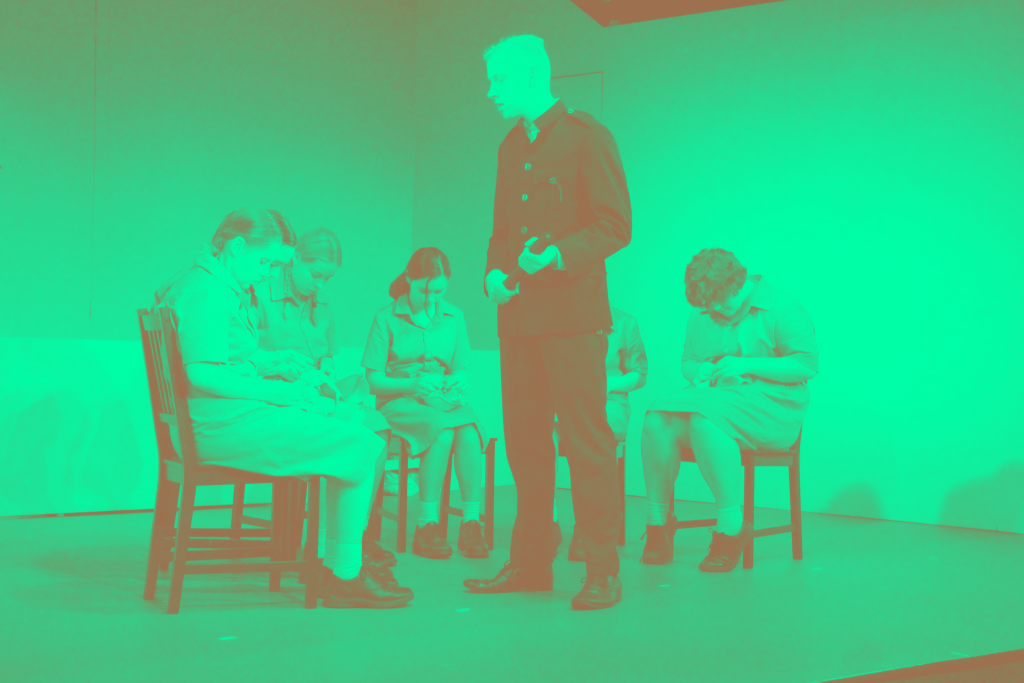
‘Eyes to the Floor’ // Javeenbah Theatre Company
‘Eyes to the Floor’ was heart-wrenching.
After a three-month COVID-19 induced rehearsal hiatus, Javeenbah Theatre Company has reopened their doors with a chilling production of ‘Eyes to the Floor’.
This script by Alana Valentine relays the cruel experiences of girls who were sent to the Hay Girls Home, devised from verbatim interviews with surviving inmates. The work combines movement, poetry, and chorus to convey a story that is as grim as it is necessary.
Opening with the girls listing their reasons for admission, with charges such as neglect and exposure to moral danger, the action is followed by a series of short vignettes that detail the horrific treatment of the girls at the Hay Girls Home; from physical labour, isolation, mismanagement of mental illness, physical and mental abuse and the consistent demand that they keep their “eyes to the floor”. This is interspersed with sparse moments of humanity where the audience are able to see the unique and beautiful personalities of the six characters – Fiona, Jane, Gwen, Emma, Marjorie and Daniella.
Director, Jocelyn Moore-Carter, recounts her own memories of visiting the museum in the Hay Gaol around 1976 in the Director’s Notes. She recalls hearing locals discussing how the institution had most recently been used for the ‘wayward’ and ‘naughty’ girls. She elaborates that the charge of exposure to ‘moral danger’ was just another word for ‘abused’ and further recounts that “these damaged, unwanted girls were hidden away to have their voices silenced”
Moore-Carter’s direction of ‘Eyes to the Floor’ creates an interesting insight to the girls’ stories and brings out the best in a strong ensemble of performers, especially the young women in the challenging roles of the inmates.
The production features an array of atmospheric elements that build the world of Hay Girls Home. Bright, white lighting conveys the harshness of the home and coloured lighting in blue, red and purple distinguish the rare moments where the girls reveal their inner thoughts, dreams and nightmares. Lighting designer, Colin Crow, effectively highlights the distinction between the two worlds and creates a clear mood shift.
Use of digital projection of real images from Hay Girls Home also adds another dimension to the action on the stage; amplifying the horrific realisation that the play is based on real events. Another particularly effective element is the deliberate use of sound to emphasise key moments, designed by Mikaela Murphy. Every time the girls move, they walk with loud, synchronised stomping on the stage; reminiscent of soldiers marching. Sound accentuates meaning through the slamming down of six chairs in unison, a rock cast loudly into a bin and water pouring into a jug. All these small moments build into an effectual creative vision that wholly supports the harrowing script.
Set design by Darren Campbell is simple but effective. Plain white walls are suggestive of the cold harshness of a hospital. The office of the superintendent, Naylor (played by Noel Thompson), is elevated on a platform behind the girls’ room. This creates a clear division between Naylor and the inmates, placing him above them. The only decorative item on set is a single painting of the Australian bush hanging on his office wall.
Limited props support the meagre possessions that the characters own. The girls use only the six wooden chairs to create a spiderweb as Daniella recounts how she watched a fly caught by a spider on the ceiling of her cell. This playful moment reminds us of childhood make-believe games and demonstrates that these girls are merely children.
Costumes by Christine McLachlan and Gillian Butcher, presented actors in plain brown uniforms that strip the girls of their individuality; marking them as the “nothing” that Naylor constantly reminds them that they are. The tartan skirt for Mrs. Kay is a nice touch that pays homage to her Irish background.
For brief moments the audience can find comedy as the quirky personalities of the girls shine through; a welcome respite from a show full of grim, cold, harshness. Mostly, ‘Eyes to the Floor’ is sheer anguish; extracting tears from its audience.
The cast portray six young inmates with consideration, skill, and poise. Megan Frener brings Marjorie to life in a performance that is wonderfully sensitive to her battle with self-harm and mental illness. Holly Wiley’s tough-girl attitude as Gwen is fantastic but the strength in her portrayal lies in her ability to show her subtle softness. Sophie Eurell delivers a delightful performance as the soft-spoken and compassionate Emma. Rachel McKinnon as Daniella plays the most child-like character of the girls but her strong boisterous personality shines throughout. Bella Thorn delivers the quietly introverted Fiona with the sense of a girl deeply affected by her experience at Hay Girls Home.
As a standout performance of ‘Eyes to the Floor’, Lily Moore-Carter’s portrayal of Jane is phenomenal. The contrast between her comedic moments discussing how “being bad is just in your blood” and the haunting descriptions of her nightmare is stark and poignant. Moore-Carter’s performance in a scene depicting Superintendent Naylor stripping Jane of her name was particularly impactful. Moore-Carter’s acting demonstrates considerable range and depth.
The supporting cast is similarly spectacular. Noel Thompson as Naylor is commanding and terrifying. Jonothan Willner’s portrayal of Mr. Furedi is reminiscent of a young, indoctrinated soldier, performing his duties blindly. Katie Grace as Mrs. Kay provides a soft-spoken glimmer of hope and her unaccompanied rendition of the folk song ‘Molly Malone’ is hauntingly beautiful.
‘Eyes to the Floor’ is extremely effective at highlighting the cruelty suffered by the inmates at the hand of this Government institution. It really makes audiences think about whether similar institutions are held to a higher standard today for the treatment of inmates. In 2020, ‘Eyes to the Floor’ is especially relevant considering recent events in juvenile detention centres, the high incarceration rate of indigenous youth, as well as the ongoing management of Australia’s refugee detention centres.
Audiences take away that they must remain vigilant not to repeat the mistakes of the past. On the projector after the show a quote reads, “Australia has a powerful and long history of locking-up anyone inconvenient… it is something we need to be aware of.” – Maree Giles (2011). This reflects Naylor’s sentiment when he says to Gwen, “We aren’t harsh to everyone – just the ones who don’t fit.”
Javeenbah Theatre Company’s production of ‘Eyes to the Floor’ is a heart-wrenching exploration of some very serious themes and challenging characters that evokes a strong emotional response and begs the question: “Have we learned from the past?”
‘Eyes to the Floor’ has sold-out season its season, which performs until Saturday, 17 October 2020. For more information about the company, visit their website.




